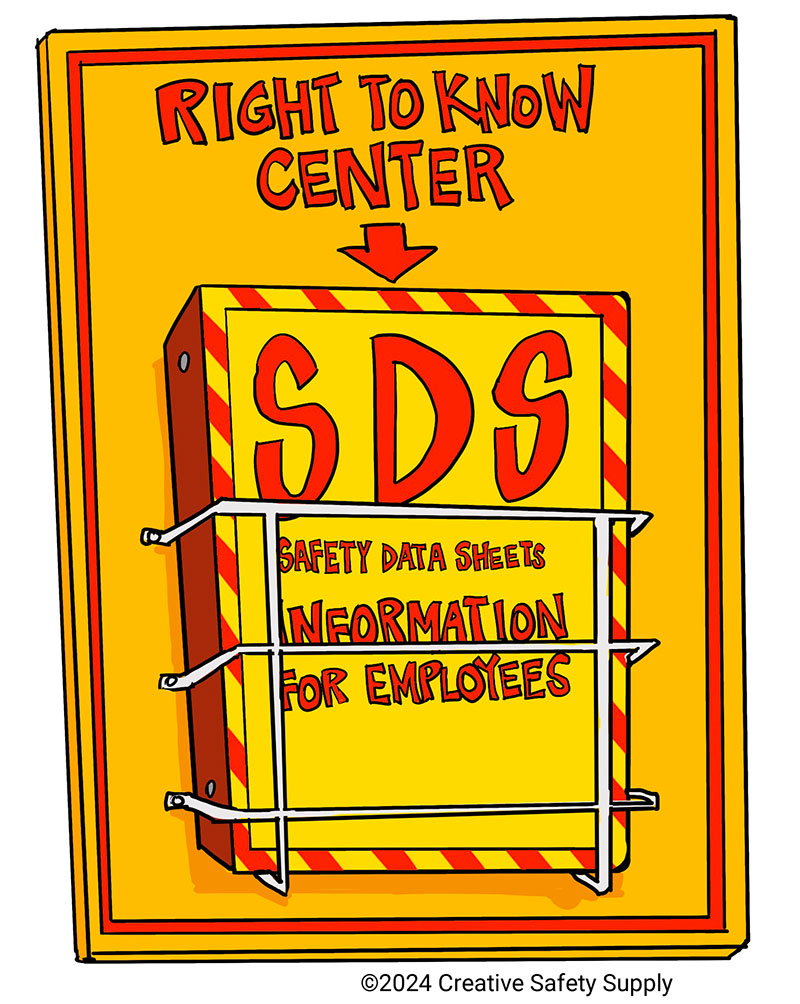
Safety Data Sheets (SDSs) are standardized documents that provide information about the hazards, properties, and handling of a chemical or hazardous material. There are 16 sections in an SDS, each of which provides specific information about the substance. The sections are as follows:

- Identification
- Hazard Identification
- Composition (also called information on ingredients)
- First-Aid Measures
- Fire-Fighting Measures
- Accidental Release Measures
- Handling and Storage
- Exposure Controls or Personal Protection
- Physical and Chemical Properties
- Stability and Reactivity
- Toxicological Information
- Ecological Information
- Disposal Considerations
- Transport Information
- Regulatory Information
- Other Information
Of course, not every SDS is going to have every one of these categories added. The categories are selected based on the properties of a given chemical or other hazardous material. All of them will include things like identification and hazard identification since those are always going to be relevant.
However, if a chemical is not flammable, the fire-fighting measures section may be omitted. It can also be included and simply say that the material is not flammable.
In most cases, the categories will be listed in the order you see above. Learning about this will help you to be able to find the information that you need more. Each category will provide the reader with important information that will help them safely use, store, or transport the chemical or other material.
Whether you are creating safety data sheets or you need to read through them, having the information needed easily at your fingertips will help you to be able to work more safely and efficiently.
Additional SDS facts:
- An SDS, or safety data sheet, is a standardized document that provides information about the hazards, properties, and handling of a chemical or hazardous material. SDSs are required by the Hazard Communication Standard (HCS) of the Occupational Safety and Health Administration (OSHA) to communicate information on these hazards to downstream users. Source: https://www.osha.gov/sites/default/files/publications/OSHA3514.pdf
- An SDS must follow a 16-section format that is internationally agreed and consistent with the UN Globally Harmonized System of Classification and Labeling of Chemicals (GHS). The 16 sections are: identification, hazard(s) identification, composition/information on ingredients, first-aid measures, fire-fighting measures, accidental release measures, handling and storage, exposure controls/personal protection, physical and chemical properties, stability and reactivity, toxicological information, ecological information, disposal considerations, transport information, regulatory information, and other information. Source: https://en.wikipedia.org/wiki/Safety_data_sheet
- SDSs are not only required for pure substances, but also for mixtures that contain hazardous ingredients. A mixture is considered hazardous if it meets the criteria for any of the hazard classes in the GHS, or if it contains an ingredient that has an occupational exposure limit, is a carcinogen, a reproductive toxicant, or has other chronic health effects. Source: https://www.osha.gov/laws-regs/standardinterpretations/2014-12-23
- SDSs are not static documents. They should be reviewed and updated periodically, especially when new information becomes available or when the chemical composition changes. OSHA requires that SDSs be updated within three months of receiving new or significant information. Source: https://www.avery.com/articles/safety-data-sheets-sds-what-you-need-to-know-for-safety-compliance
Similar Questions
- What is the difference between MSDS and SDS?
- What is MSDS?
- What information is on an MSDS?
- What does MSDS stand for?
- What is the Purpose of SDS?
- What is the New Name for MSDS?
- What does HCS stand for?
- Who Provides MSDS/SDS Sheets?
- How does OSHA define a hazardous chemical?


